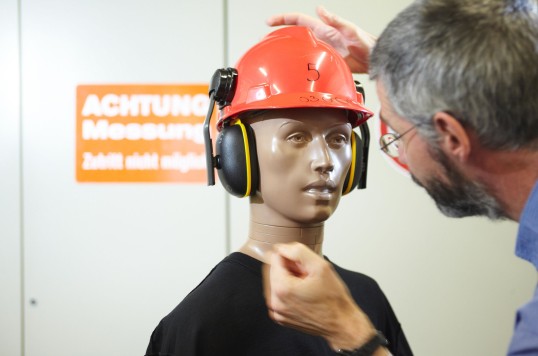Noise prevention measures for reductions in noise-induced hearing loss

Source: © Dominik Buschardt, DGUV
Noise is an undesirable sound which can have an adverse effect on or damage human health. As noise can be experienced as irritating and distracting even at low sound pressure levels, it subjects employees to stress which can have a negative effect on their ability to concentrate and perform. The resultant increase in incorrect responses and impaired signal perception at higher noise levels raise the risk of accidents. Long-term occupational exposure to noise can also be accompanied by adverse effects on employee health, and in particular damage to their hearing.
In Germany, around 4-5 million employees are exposed to noise scenarios which represent a hazard to their safety and health. Despite significant success in the prevention of serious cases where employee retirement is justified, noise-induced hearing loss remains one of the most frequently recorded occupational diseases.
Legal guidelines
In effect since 9 March 2007, the German Noise and Vibrations Occupational Safety and Health Ordinance (LärmVibrationsArbSchV) implements two EC guidelines and represents a common legal framework for exposure to noise and vibrations.
LärmVibrationsArbSchV is put into tangible terms by various technical rules (TRLVs) describing:
- The identification and assessment of noise and/or vibration-related hazards;
- The measurement of noise and vibrations; and
- The determination of suitable protective measures.
The rules are drawn up by the Committee for Industrial Safety (ABS) and published in the web-based Joint Ministerial Gazette by the Federal Ministry of Labour and Social Affairs.
Contact

Peter Hammelbacher
German Social Accident Insurance Institution for Woodworking and metalworking
Tel.: 089 17918-15509
E-Mail